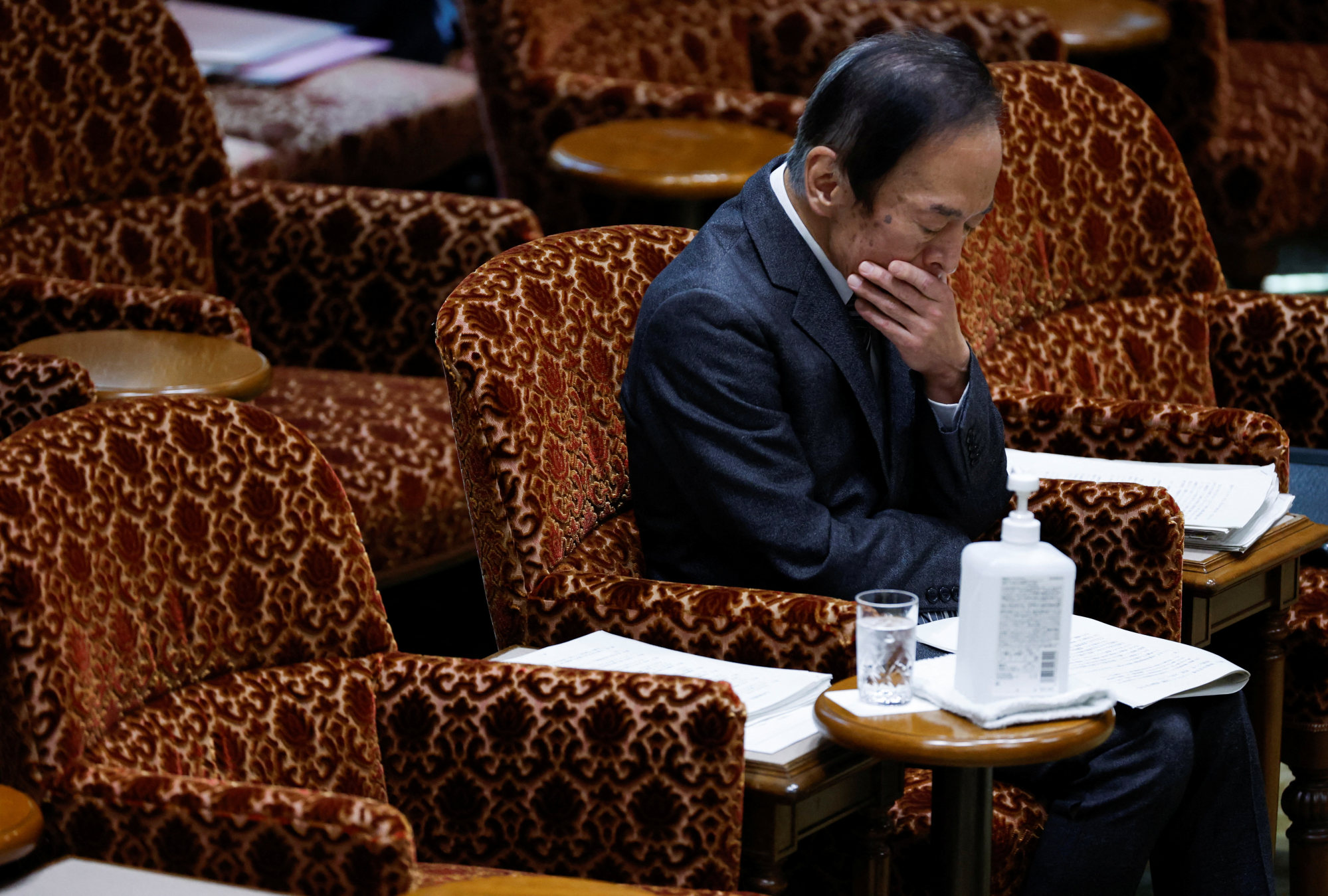
Banking crisis gives Bank of Japan a chance to gently raise bond rates
- Japan needs to wind up its expensive bond-buying programme and a weakened currency is the easiest way to inflate the problem away
- Expect a managed rise in the dollar-yen rate, with the 10-year bond yield likely to rise to 1 per cent by mid-2025
Earlier this month, Kazuo Ueda was formally approved by the Diet as the new governor of the Bank of Japan to take over after a decade of Haruhiko Kuroda at the helm and almost 20 years of zero interest rates.
In a statistical anomaly, it actually owns more than 100 per cent of some 10-year bonds: buying the same bond twice, as some of the securities it lends get sold back. With few natural bond buyers at these low yields, the government is running a huge deficit.
Rising yields elsewhere adds pressure but the government cannot afford to let 10-year yields rise too high when debt servicing is already over 30 per cent of government receipts. If yields were to rise to 2 per cent for a few years, debt servicing would be over 50 per cent, with a massive mark-to-market loss on the BOJ’s balance sheet.
But it is impossible to keep yields low and stop the currency from depreciating at the same time – the BOJ will have to choose.

Option one would be to default, which would transfer the problem to Japanese citizens and not solve anything.
The second option would be to inflate the problem away by letting the currency depreciate. Seeing as inflation is a slow-burn version of default, eroding purchasing power over time, the BOJ will have to carefully manage the rise in bond yields. Already, amid speculation that the BOJ will abandon its so-called yield curve control policy, 10-year swap yields have risen by half a percentage point higher than bonds at times.

The BOJ finds itself in the third position, and recent events mean it may get its wish in the short term, but is likely to have to pivot to position two at some point this year. A weakened currency is the easiest way to inflate the problem away, and Japan wants inflation anyway. It could be seen as a successful outcome for the BOJ to have finally managed it after decades.
New BOJ governor’s No 1 challenge? Ensure its policy benefits the people
For incoming BOJ governor Ueda to immediately change policy would be seen as disrespectful to Kuroda. This was why the outgoing governor raised bond yields last December, allowing his successor to continue to do so. Still, we should expect no changes for Ueda’s first two meetings.
A more likely scenario would be to raise the bond yield to 0.75 per cent and then 1 per cent over the second quarter next year and the first half of 2025.

A move that’s too fast could put a lot of downward pressure on bonds. It is an outside possibility that with the latest banking crisis and lower bond yields, there is a chance for the BOJ to change its bond policy when there isn’t immediate pressure on the upper edge of the band – but that would require it to act fast.
The euro-yen pair is also a good way to take out some dollar volatility, with the European Central Bank still behind the curve. While the Fed is much closer to the terminal rate (the longer-term target rate of stability), the European Union economy is less robust.
Clive Ponsonby is the author of the Hedder monthly series “Currency View” and the Currency Fellow at Hedder

.jpg?itok=OpB2HE8P&v=1679969935)